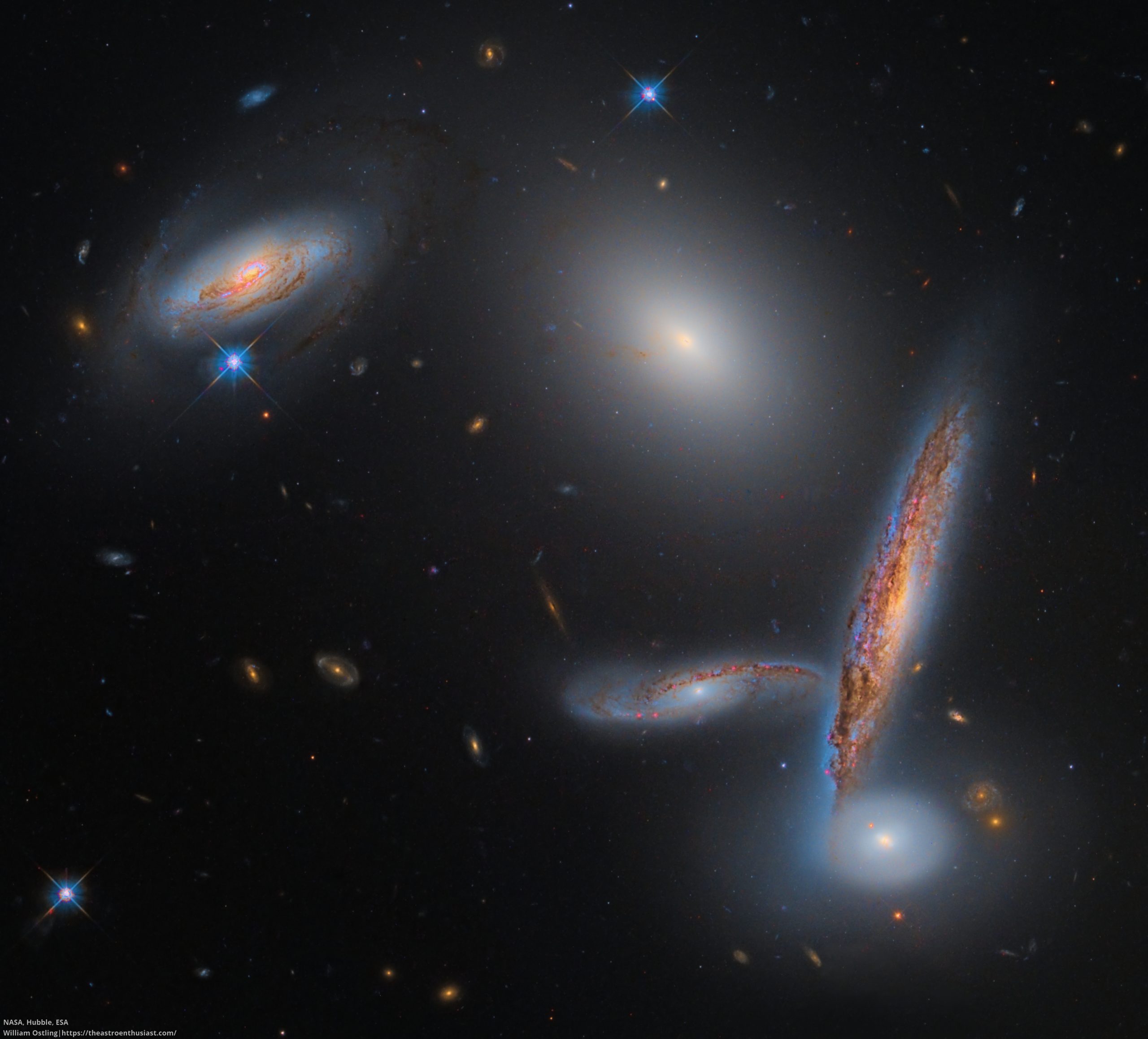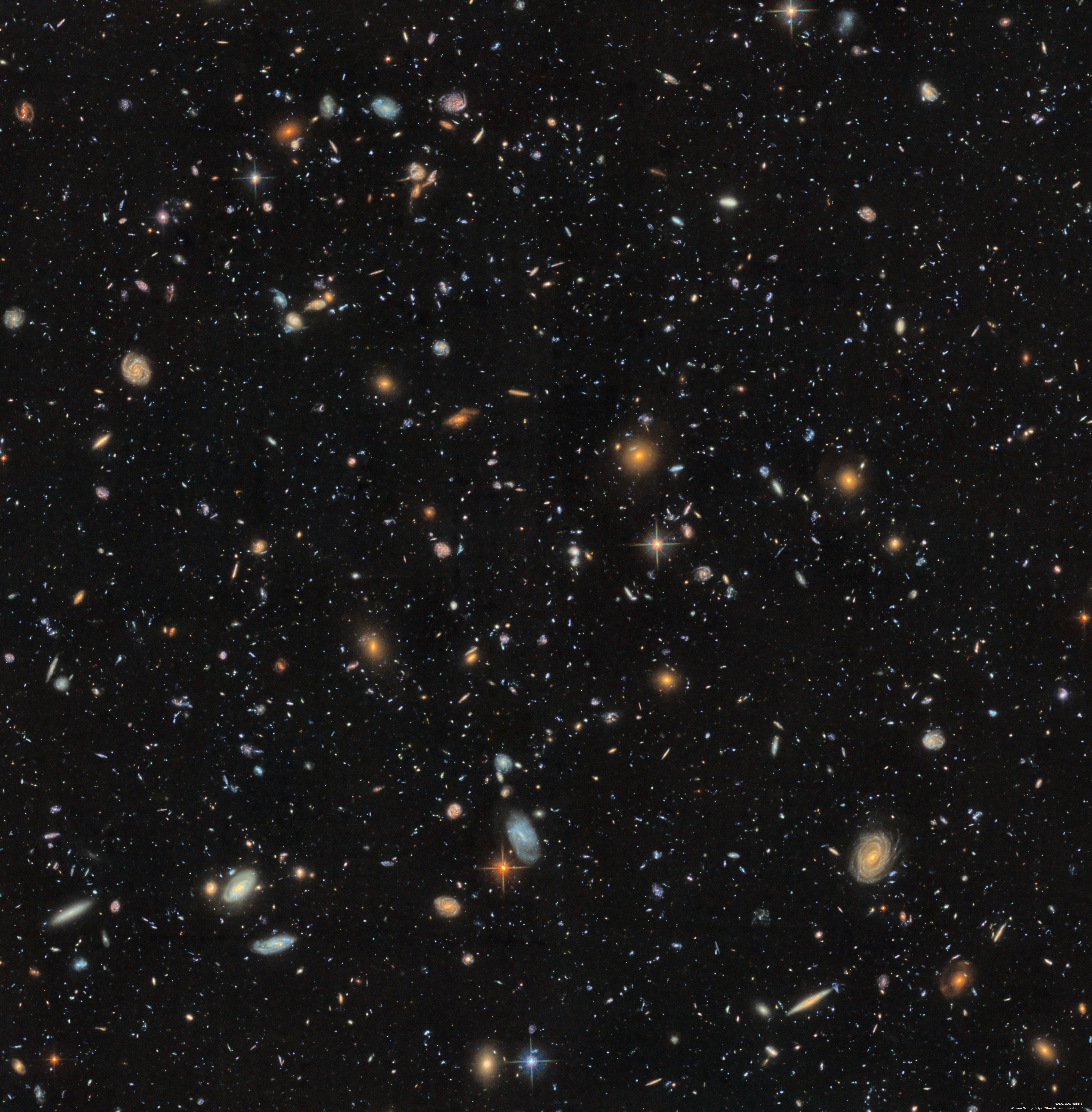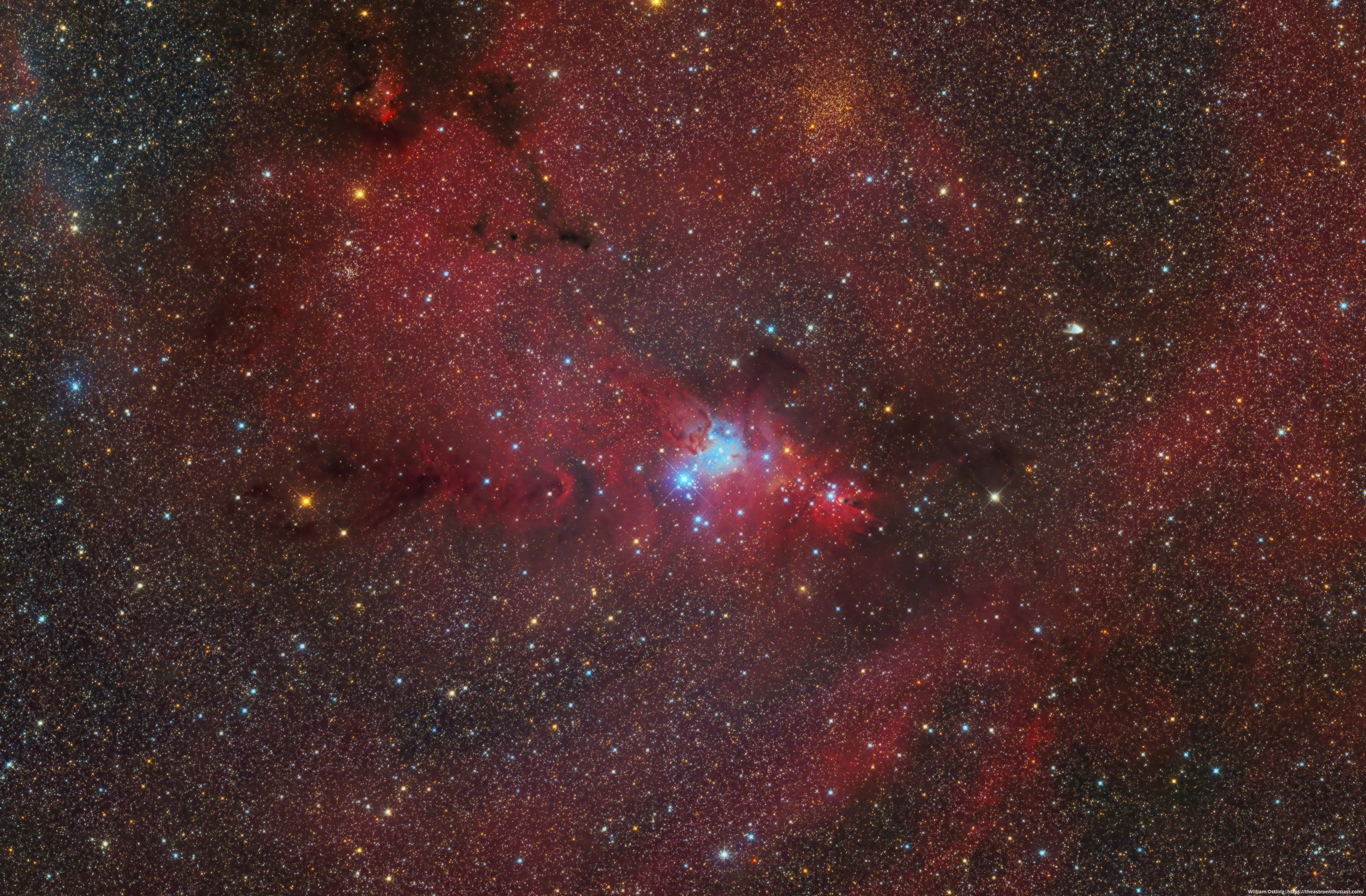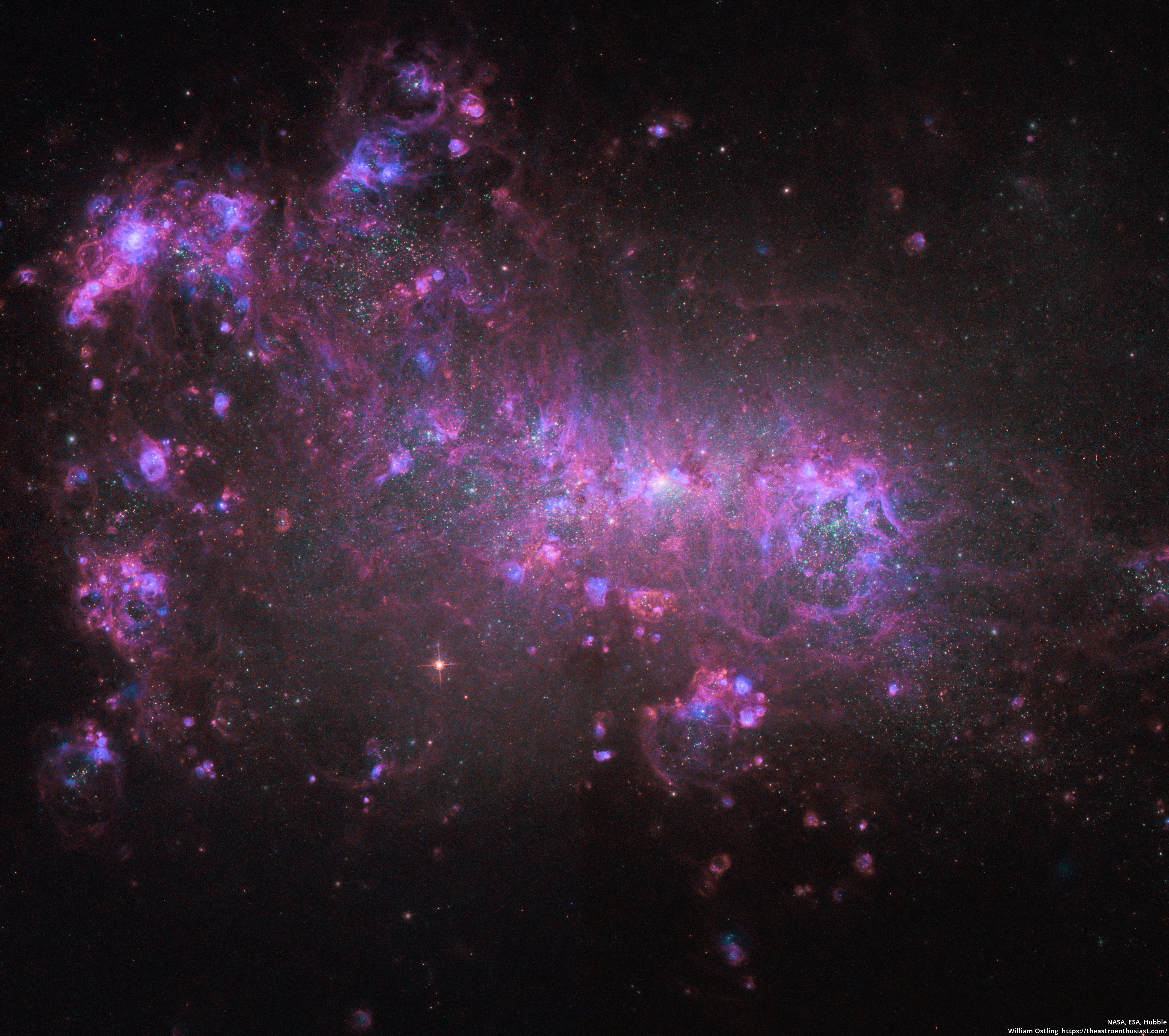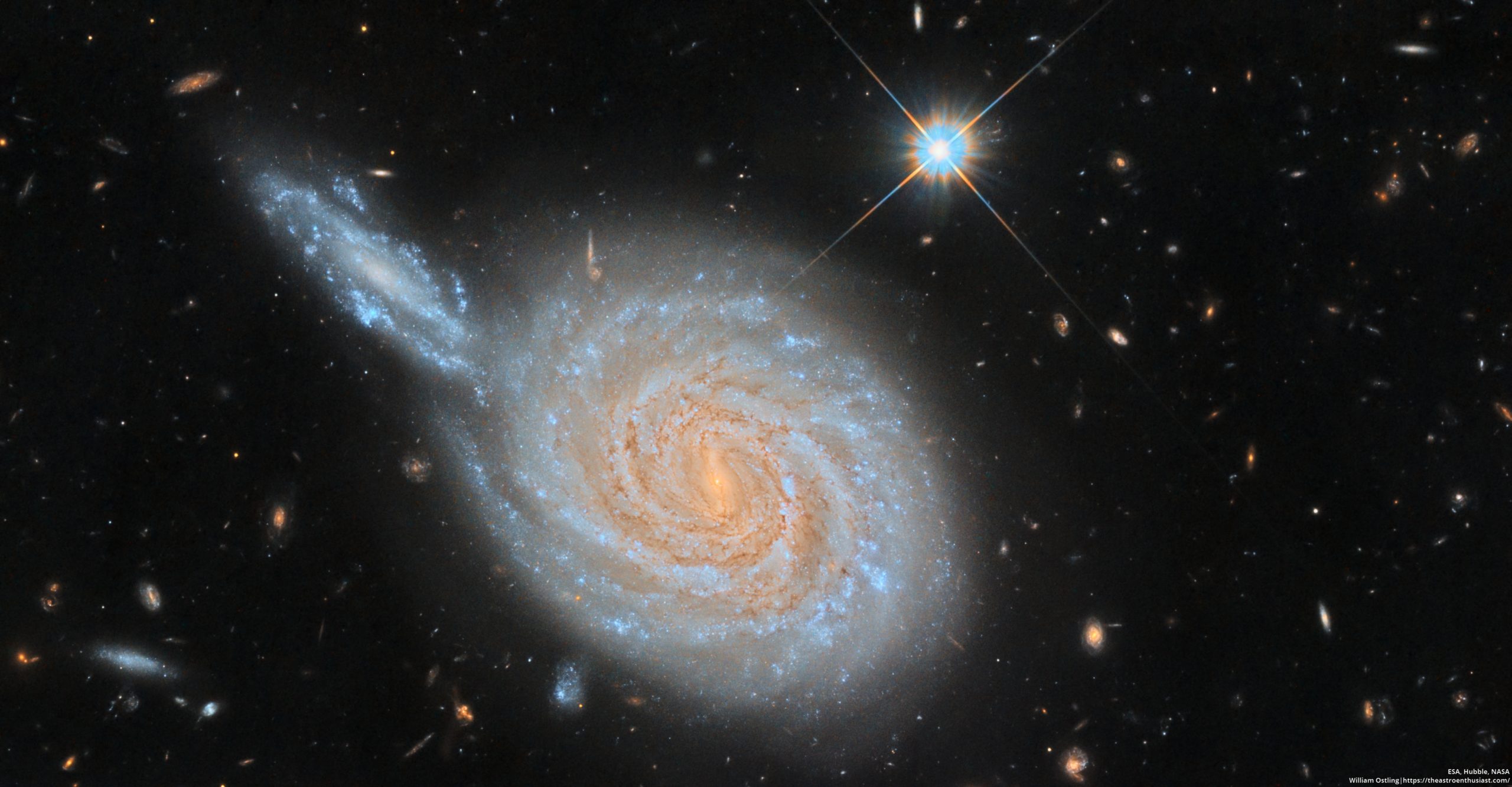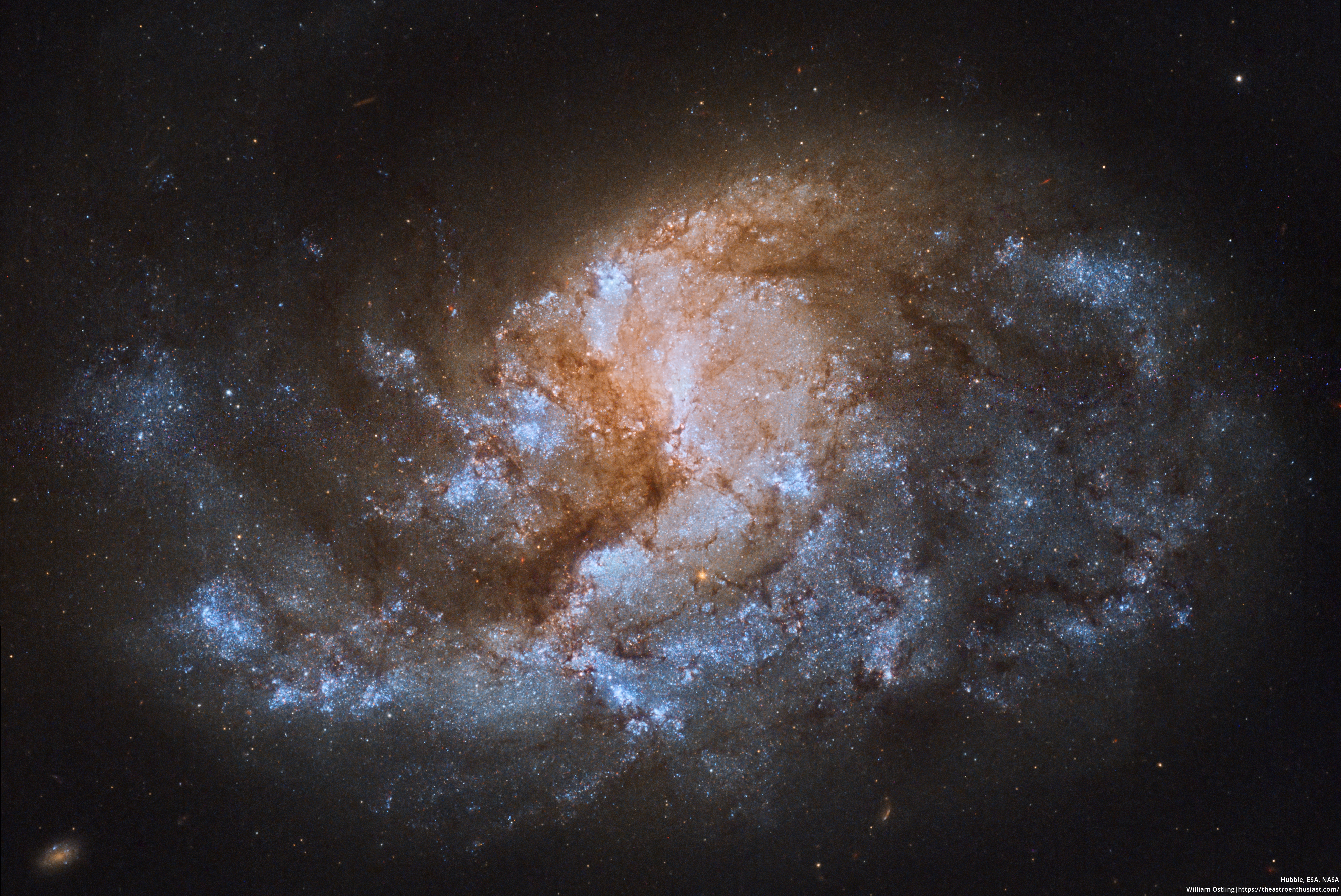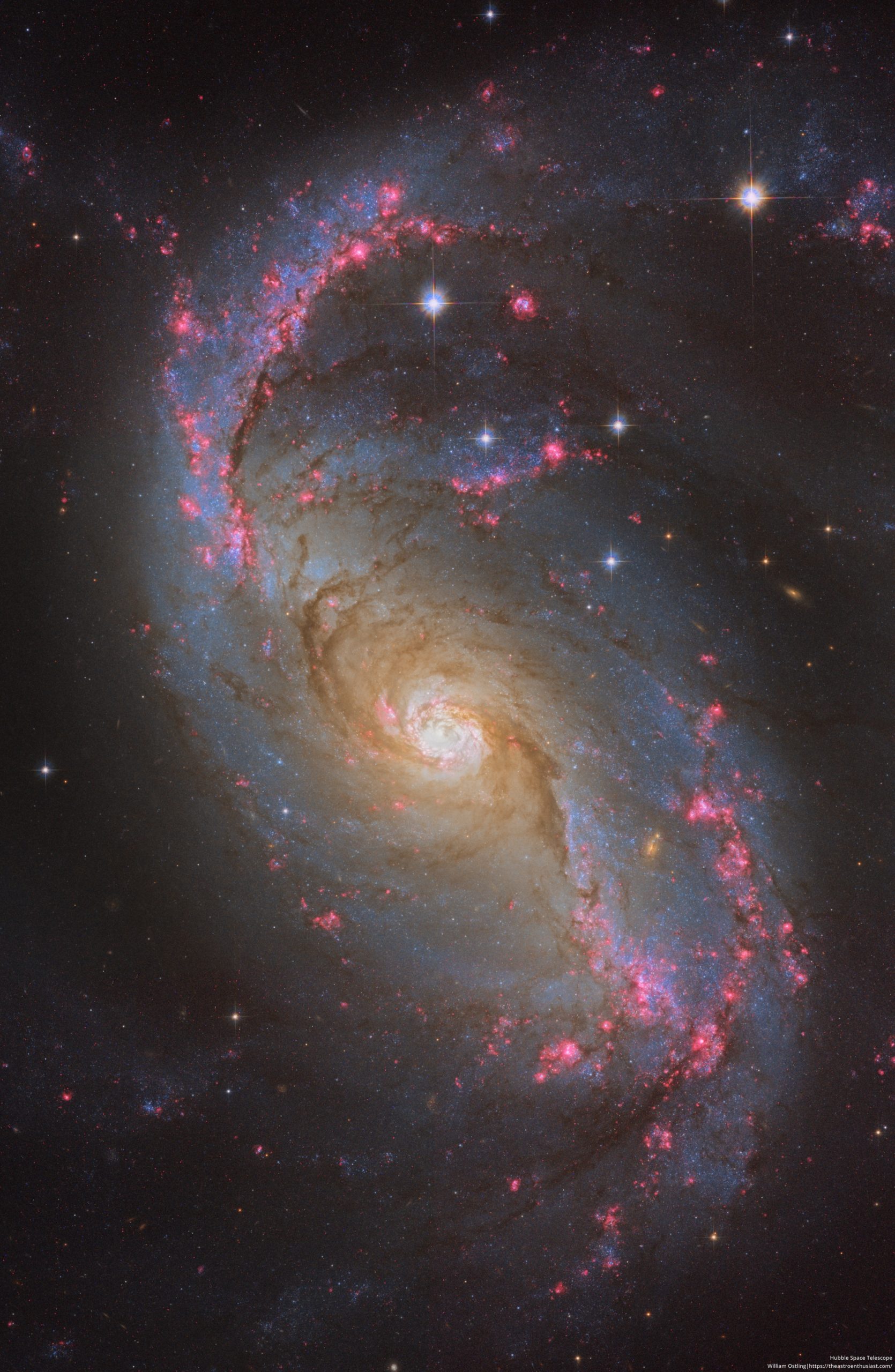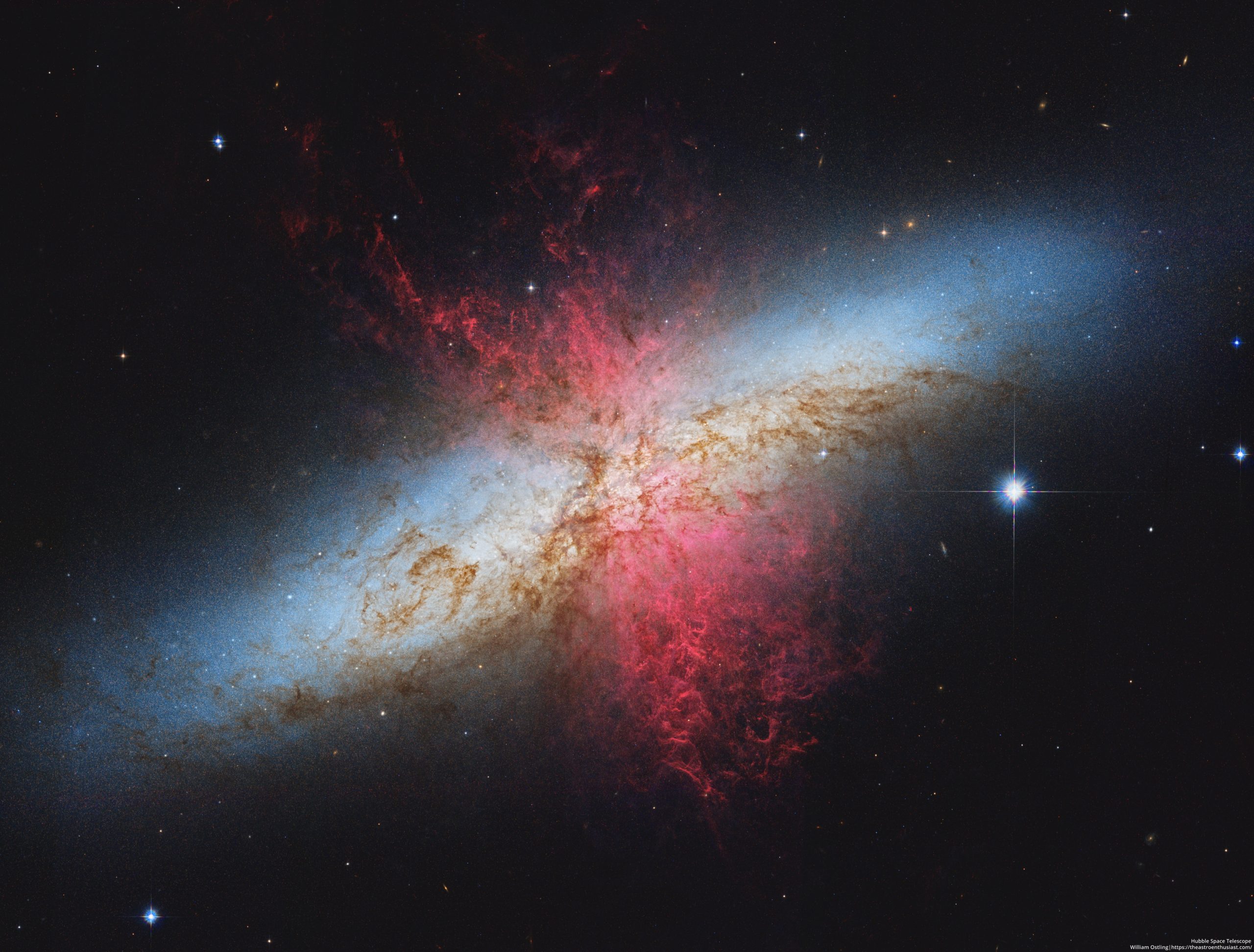NGC 2276 from Hubble
The magnificent spiral galaxy NGC 2276 looks a bit lopsided in this Hubble Space Telescope snapshot. A bright hub of older yellowish stars normally lies directly in the center of most spiral galaxies. But the bulge in NGC 2276 looks offset to the upper left. In reality, a neighboring galaxy to the right of NGC 2276 (NGC 2300, not seen here) is gravitationally tugging on its disk of blue stars, pulling the stars on one side of the galaxy outward to distort the galaxy’s normal fried-egg appearance. […]
Read more
